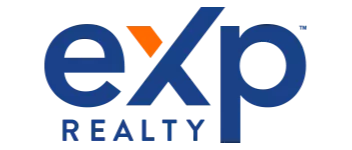Navigating the Mortgage Process: From Pre-Approval to Closing | Josh Hart - eXp Realty

Navigating the Mortgage Process: From Pre-Approval to Closing
The mortgage process can be a complex journey, especially for first-time homebuyers. From securing a pre-approval to managing closing costs, each stage is crucial to successfully purchasing your home. This guide breaks down the mortgage process step-by-step, offering tips on locking in the best mortgage rate and preparing for closing.
Step 1: Mortgage Pre-Approval
Getting pre-approved is the first official step in the mortgage process. Pre-approval provides you with a clear idea of how much you can borrow and signals to sellers that you’re a serious buyer.
How to Get Pre-Approved
To get pre-approved, you’ll need to provide financial documents, including proof of income, tax returns, bank statements, and details on any debts or other financial obligations. Lenders review this information to determine your loan eligibility and set a preliminary interest rate based on your credit score, income, and debt-to-income ratio.
Why Pre-Approval Matters
A mortgage pre-approval letter demonstrates that a lender has evaluated your finances and is willing to loan you a specific amount. This makes you a more attractive buyer in a competitive market, especially when multiple offers are on the table.
Step 2: Shopping for the Best Mortgage Rates
Interest rates play a significant role in determining your monthly payments and the total cost of your loan. Shopping around for the best mortgage rate can save you thousands over the life of the loan.
Compare Lenders and Loan Types
Mortgage rates vary between lenders, so it’s wise to get quotes from multiple sources. Consider factors like loan terms, fees, and the type of mortgage (fixed-rate vs. adjustable-rate) to find the best fit for your financial situation.
Locking in Your Rate
Once you find an ideal rate, you may have the option to “lock in” that rate with your lender. Rate locks can last 30 to 60 days and protect you from interest rate increases during the application process. Just be mindful of the lock expiration to avoid unexpected rate adjustments.
Step 3: Mortgage Application and Underwriting
After you’ve chosen a lender and a loan type, the formal application process begins. During this stage, your lender will delve deeper into your financial history to assess risk and determine if the loan should be approved.
Completing the Mortgage Application
The mortgage application process involves submitting extensive information on your finances, employment, and assets. Be prepared to answer additional questions and provide documentation if requested.
The Underwriting Process
Underwriting is the behind-the-scenes process where your lender evaluates your ability to repay the loan. The underwriter will verify your income, employment, assets, and debts. They may also require additional information, such as explanations for large bank deposits or documentation of down payment sources.
Conditional Approval
If the underwriter approves your application with conditions (such as providing more information or making a certain payment), this is known as conditional approval. Once all conditions are met, you’ll receive final approval, signaling that the lender is ready to proceed with closing.
Step 4: Appraisal and Home Inspection
Lenders require an appraisal to confirm the property’s value. This protects both you and the lender by ensuring the loan amount aligns with the property’s worth.
The Appraisal Process
A licensed appraiser evaluates the home’s condition, location, and comparable properties to determine its market value. If the appraisal comes in below the offer price, you may need to renegotiate with the seller or cover the difference in cash.
Home Inspection
While an inspection isn’t always required by lenders, it’s highly recommended for buyers. A professional inspector will check the property’s condition, identifying potential issues that could affect its value or livability.
Step 5: Loan Approval and Closing Preparation
After the appraisal and any inspections are complete, your lender will issue final loan approval. You’re now in the last phase of the mortgage process: preparing for closing.
Reviewing the Closing Disclosure
Three days before closing, you’ll receive the Closing Disclosure, a detailed summary of your loan terms, monthly payments, and closing costs. Review this document carefully to ensure it matches your lender’s original Loan Estimate and that there are no unexpected fees.
Organizing Closing Costs
Closing costs typically range from 2-5% of the loan amount and include fees for things like the loan origination, appraisal, title search, and homeowners insurance. Work with your lender to understand these costs, as some can be negotiated or paid over time.
Step 6: Closing Day
Closing day is when the final paperwork is signed, and ownership of the property transfers to you. Here’s what to expect:
Final Walk-Through
Before closing, you’ll have a final walk-through of the property to ensure it’s in the agreed-upon condition. Check that all requested repairs have been completed and that nothing has changed since the last viewing.
Signing the Paperwork
At closing, you’ll sign several legal documents, including the mortgage note, deed of trust, and other disclosures. Your lender’s representative or closing agent will guide you through each document, explaining its purpose and answering any questions.
Funding and Keys
After the paperwork is signed, the lender will transfer funds to the seller, and you’ll receive the keys to your new home. Congratulations—you’re now a homeowner!
Tips for Managing Closing Costs and Securing the Best Rate
- Negotiate Closing Costs: Some closing costs, like lender fees, can be negotiated. Ask your lender if they’re willing to reduce or waive certain fees, or explore the option of a no-closing-cost mortgage.
- Consider Points to Lower Your Rate: Buying “points” is a way to reduce your mortgage rate. This can be worthwhile if you plan to stay in the home long enough to recoup the upfront cost.
- Improve Your Credit Before Applying: Higher credit scores often mean lower interest rates. Pay down debt, avoid new credit inquiries, and make timely payments to improve your credit before applying.
Final Thoughts
The mortgage process—from pre-approval to closing—can feel daunting, but understanding each stage makes it easier to navigate. With careful preparation, you can secure the best rate, manage closing costs, and confidently move into your new home.
If you’re ready to begin the journey, I’m here to help guide you every step of the way!
Categories
Recent Posts











"My mission is to make your real estate journey as smooth and stress-free as possible. Whether you're buying your first home or navigating financial challenges, I'm here to provide transparent, friendly, and timely support every step of the way."
